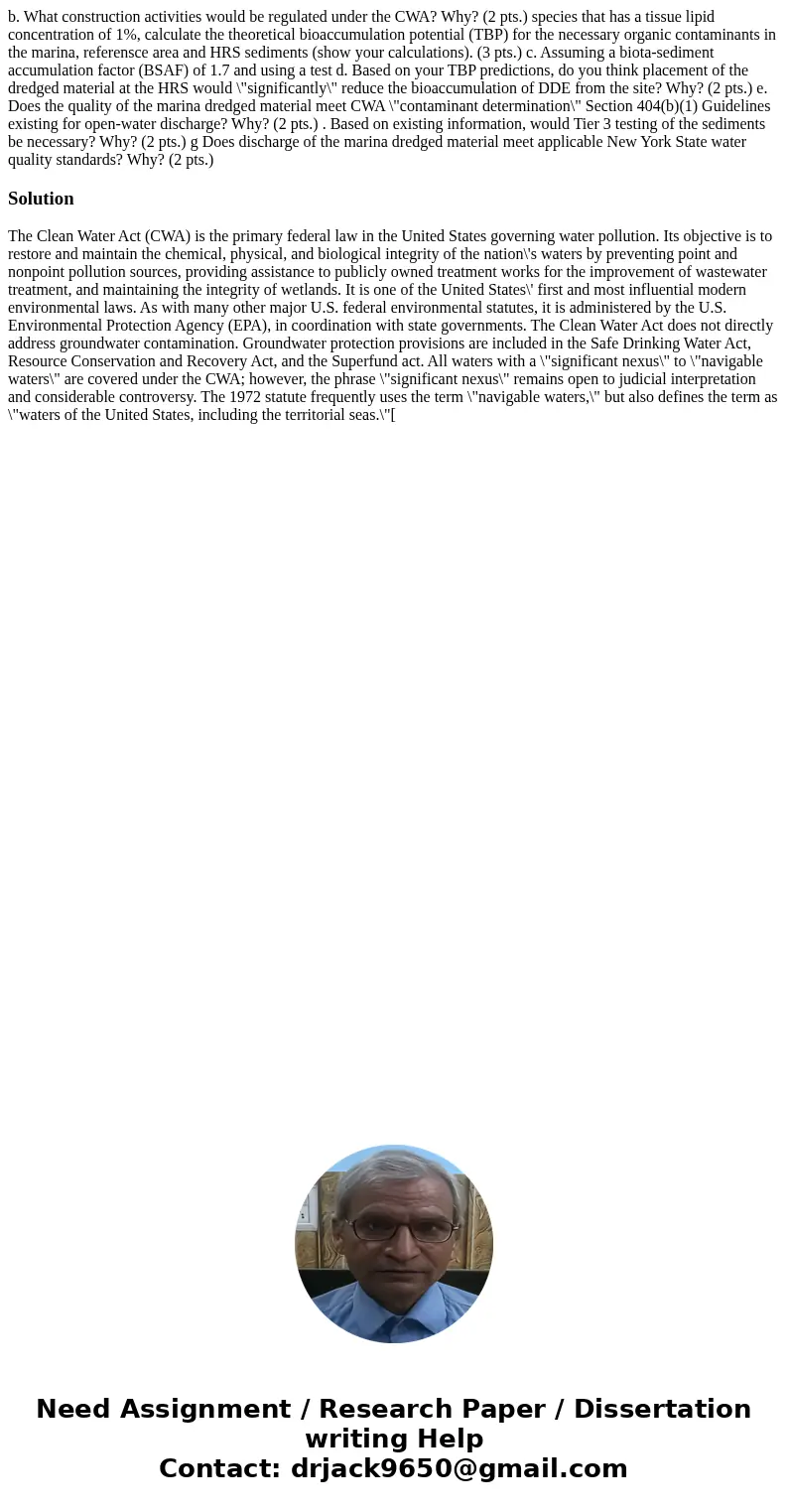b What construction activities would be regulated under the
Solution
The Clean Water Act (CWA) is the primary federal law in the United States governing water pollution. Its objective is to restore and maintain the chemical, physical, and biological integrity of the nation\'s waters by preventing point and nonpoint pollution sources, providing assistance to publicly owned treatment works for the improvement of wastewater treatment, and maintaining the integrity of wetlands. It is one of the United States\' first and most influential modern environmental laws. As with many other major U.S. federal environmental statutes, it is administered by the U.S. Environmental Protection Agency (EPA), in coordination with state governments. The Clean Water Act does not directly address groundwater contamination. Groundwater protection provisions are included in the Safe Drinking Water Act, Resource Conservation and Recovery Act, and the Superfund act. All waters with a \"significant nexus\" to \"navigable waters\" are covered under the CWA; however, the phrase \"significant nexus\" remains open to judicial interpretation and considerable controversy. The 1972 statute frequently uses the term \"navigable waters,\" but also defines the term as \"waters of the United States, including the territorial seas.\"[

 Homework Sourse
Homework Sourse